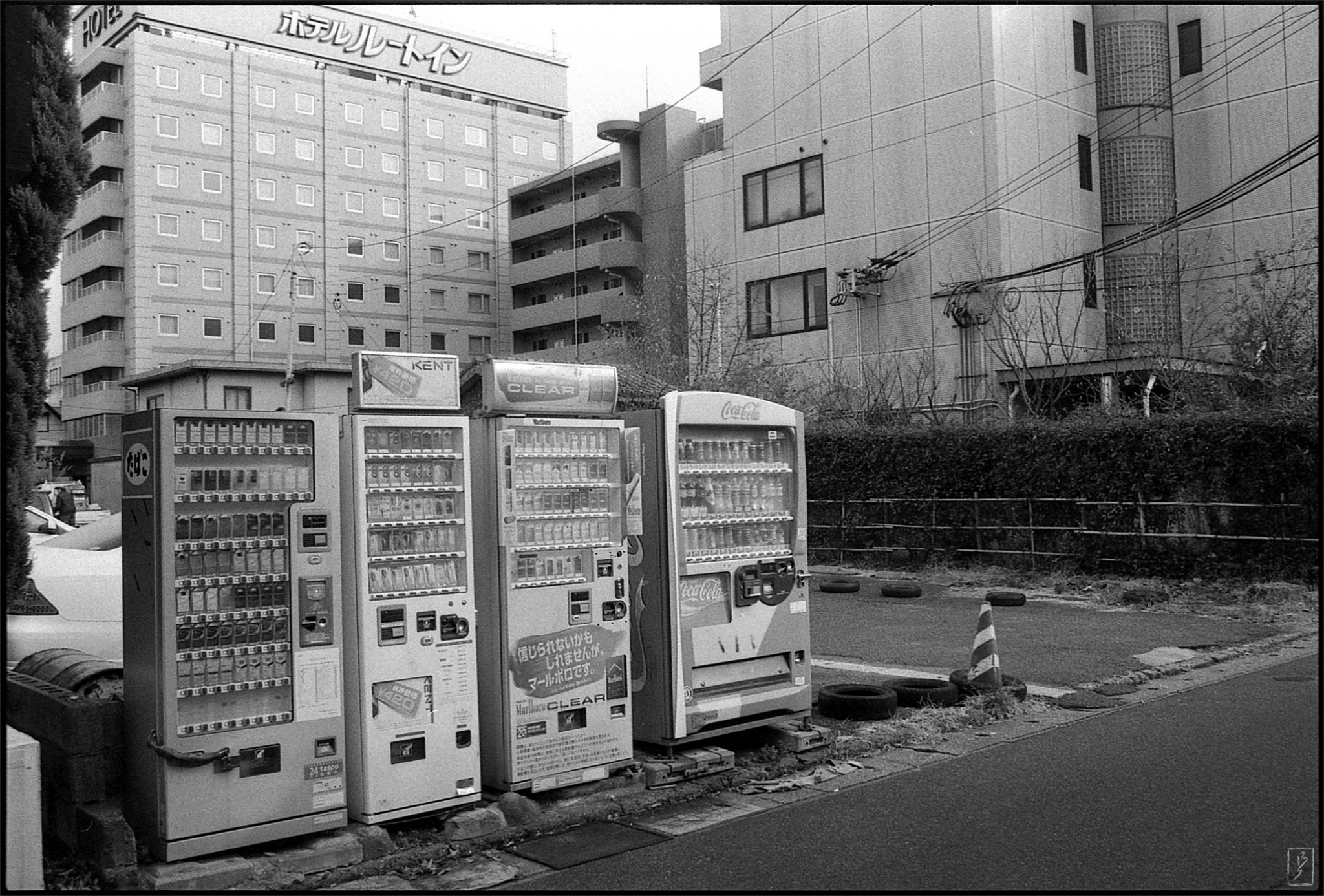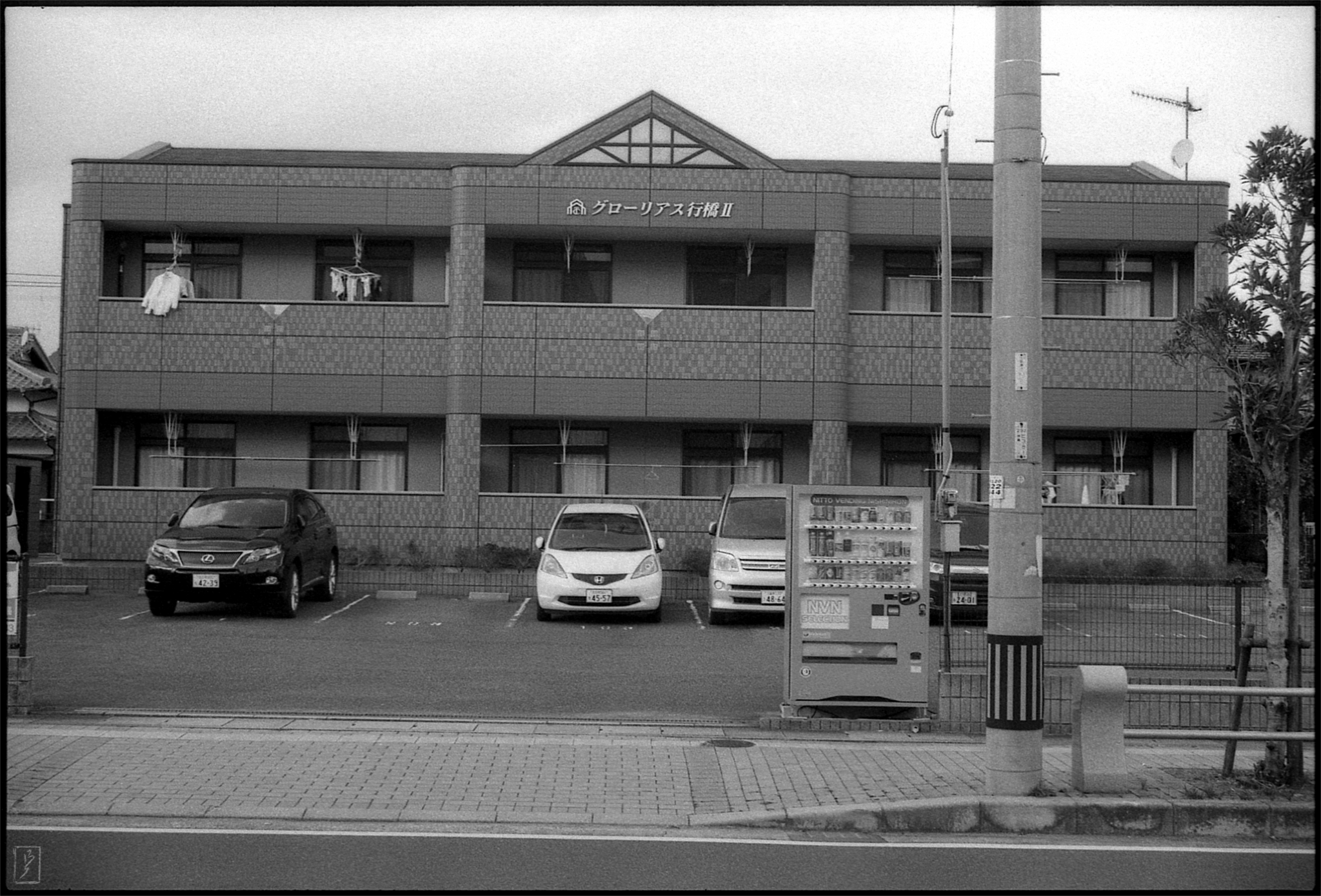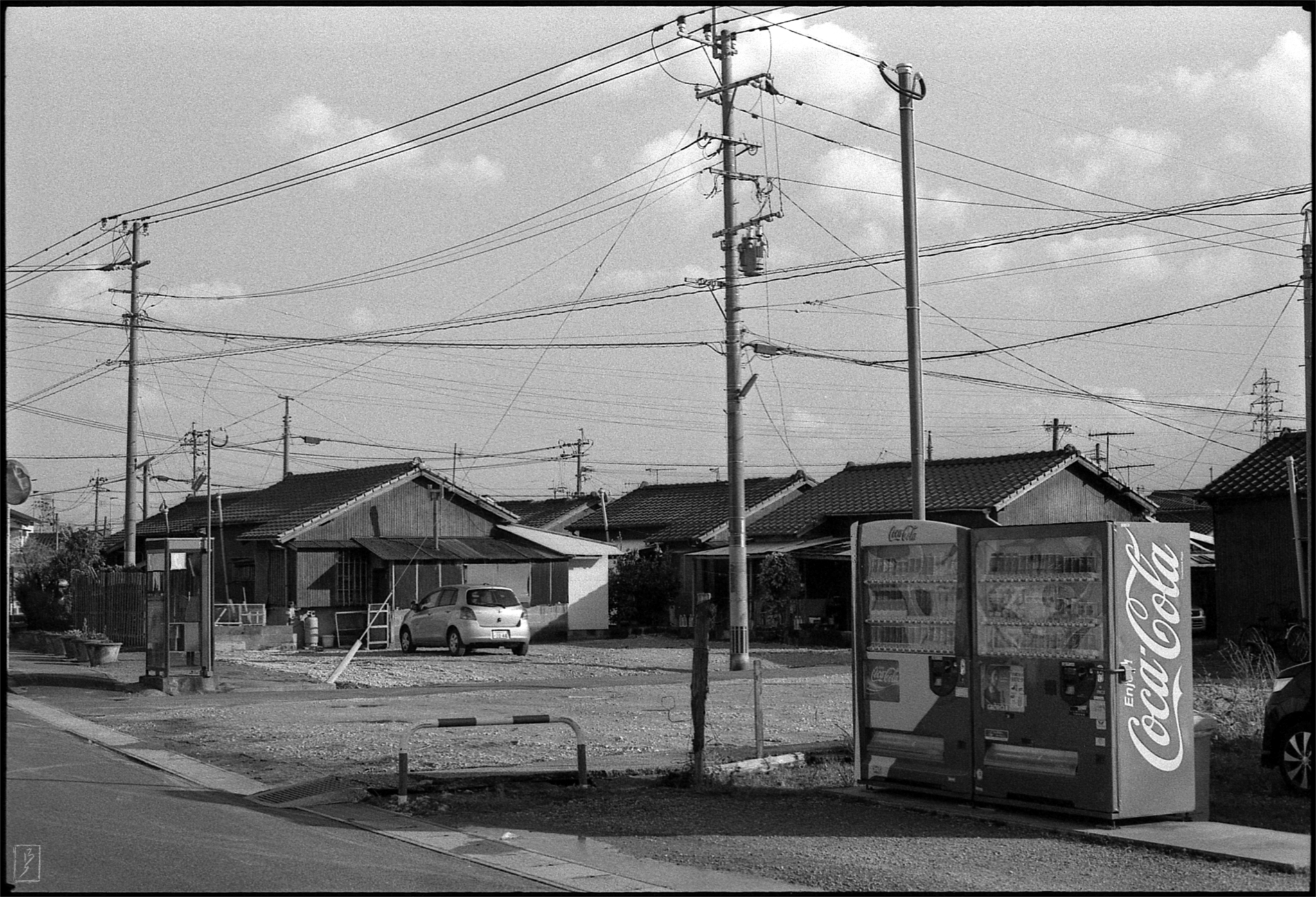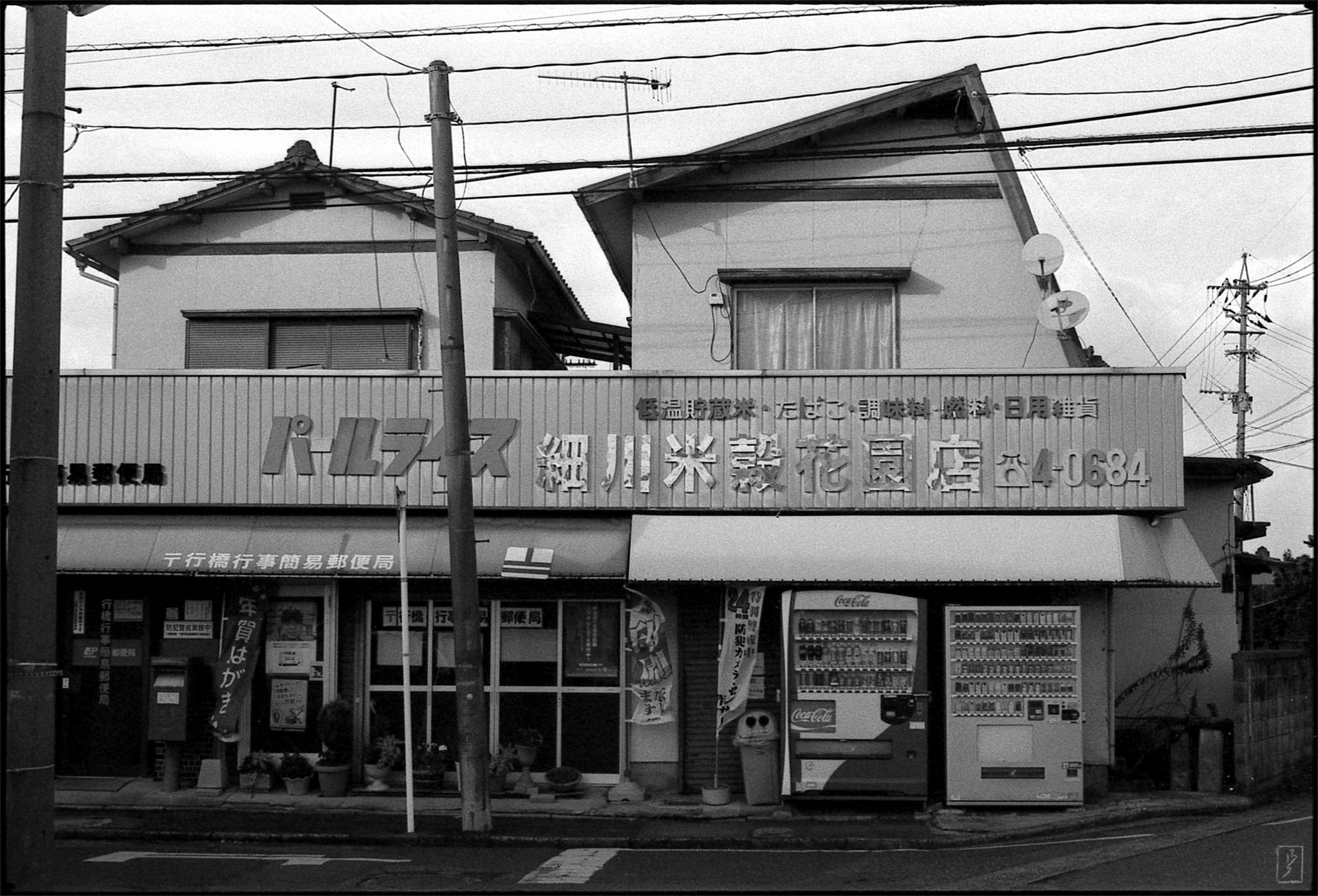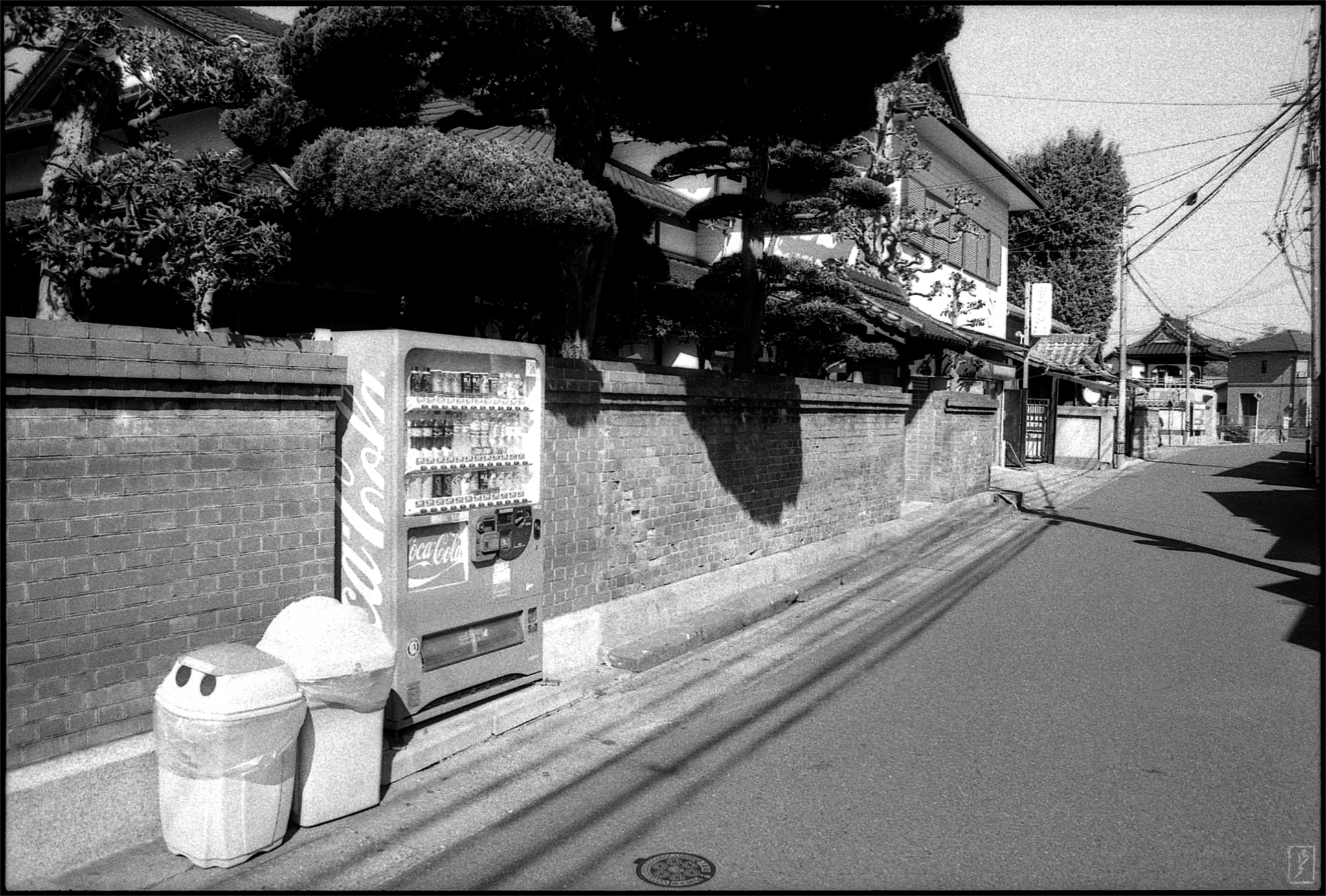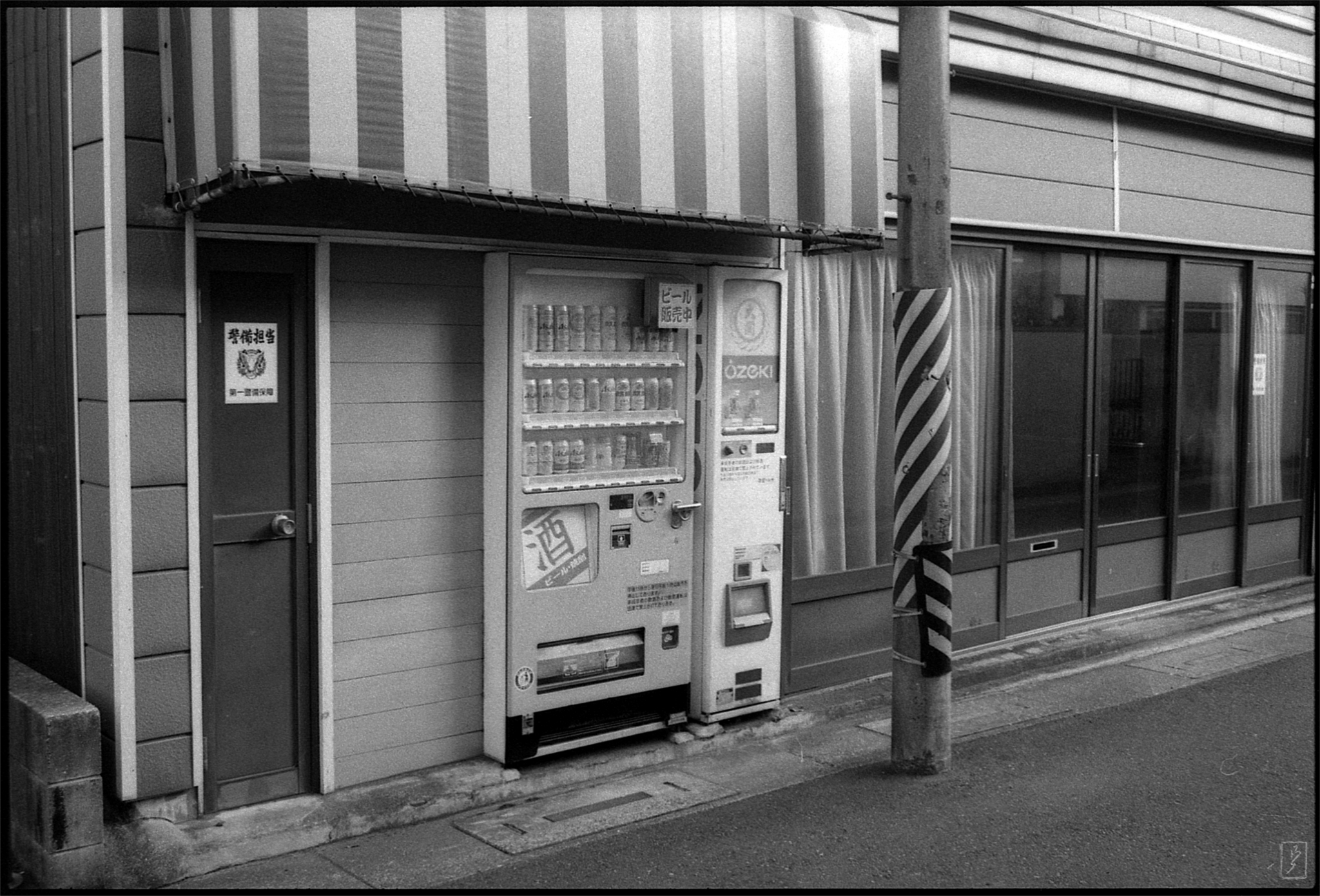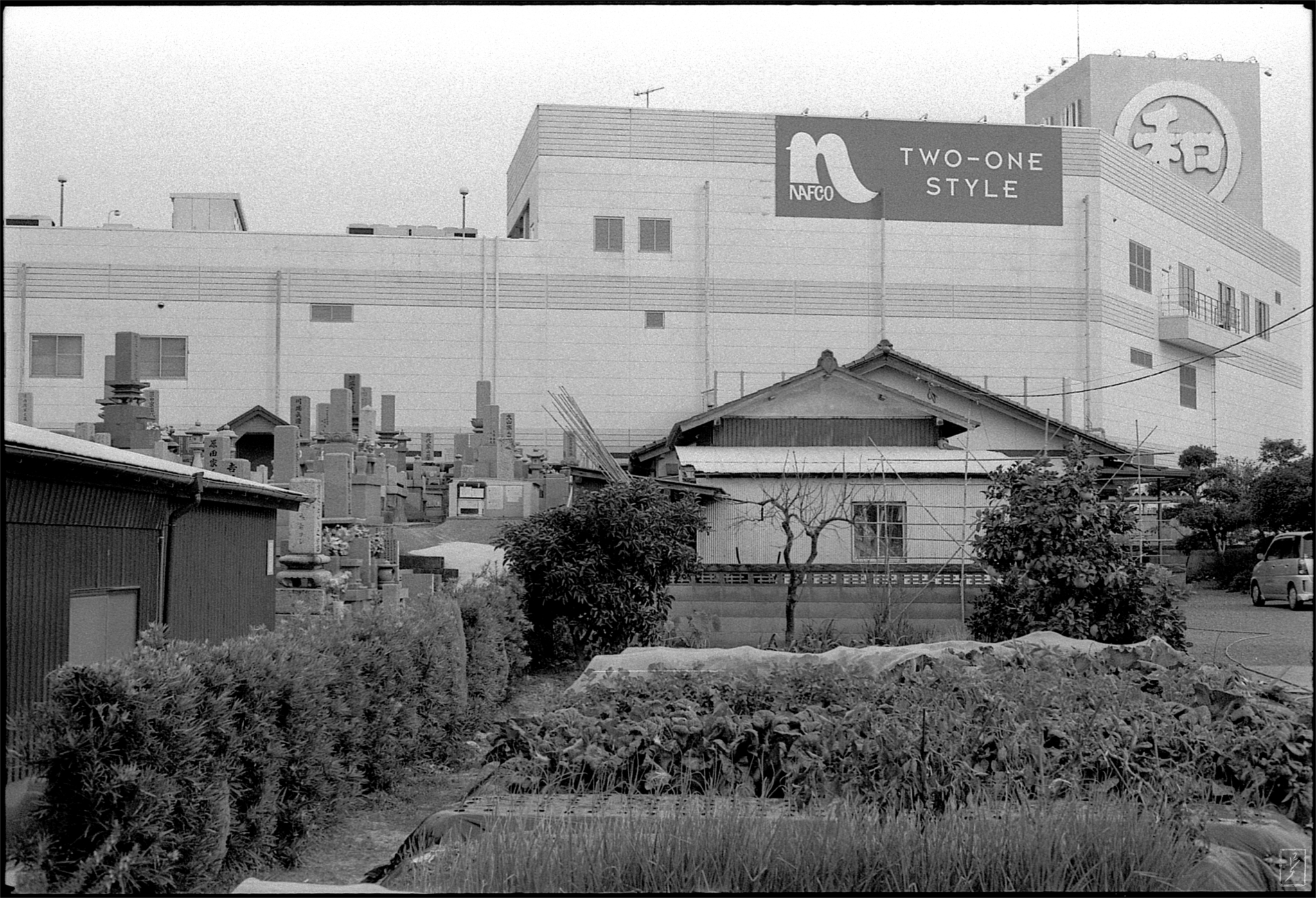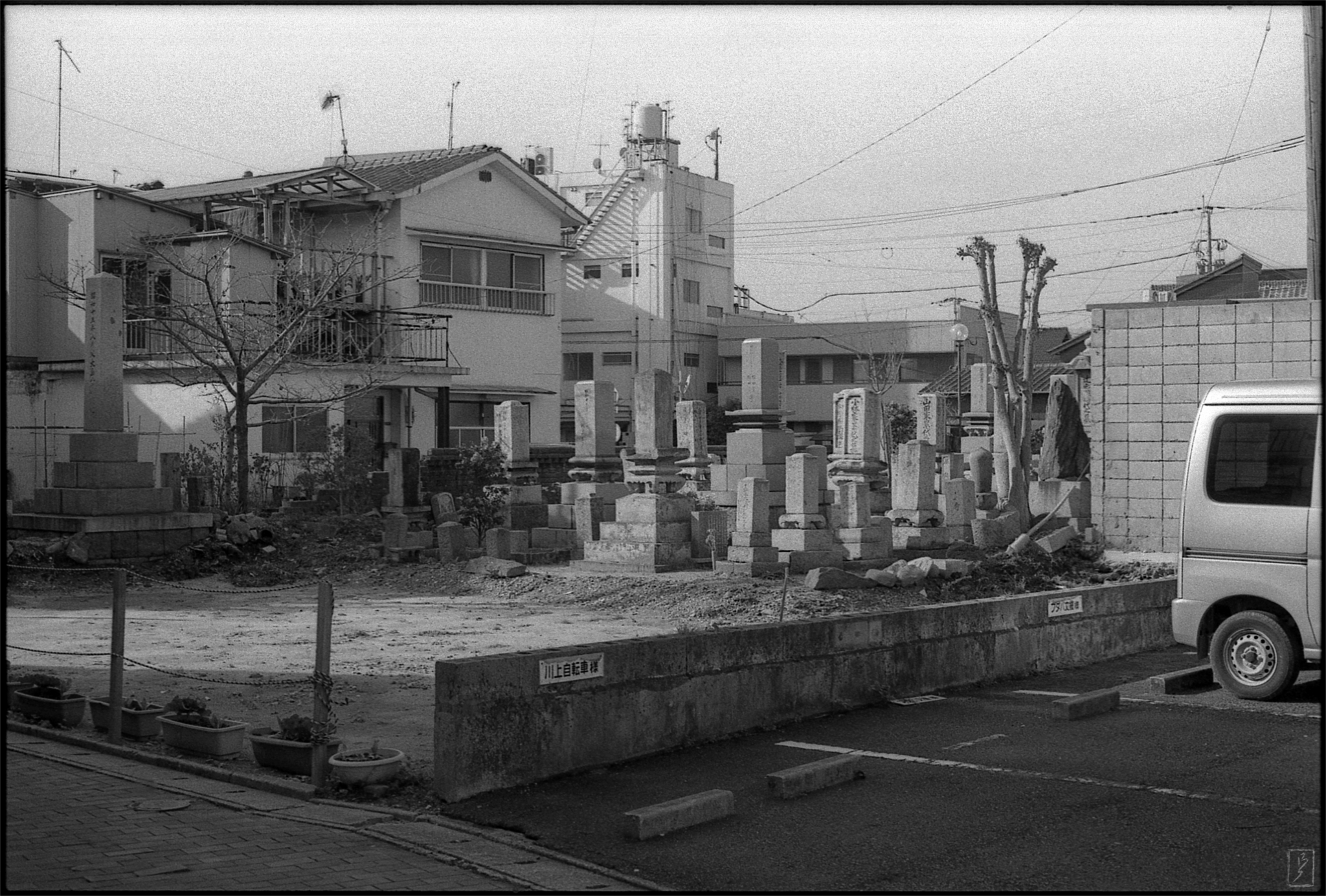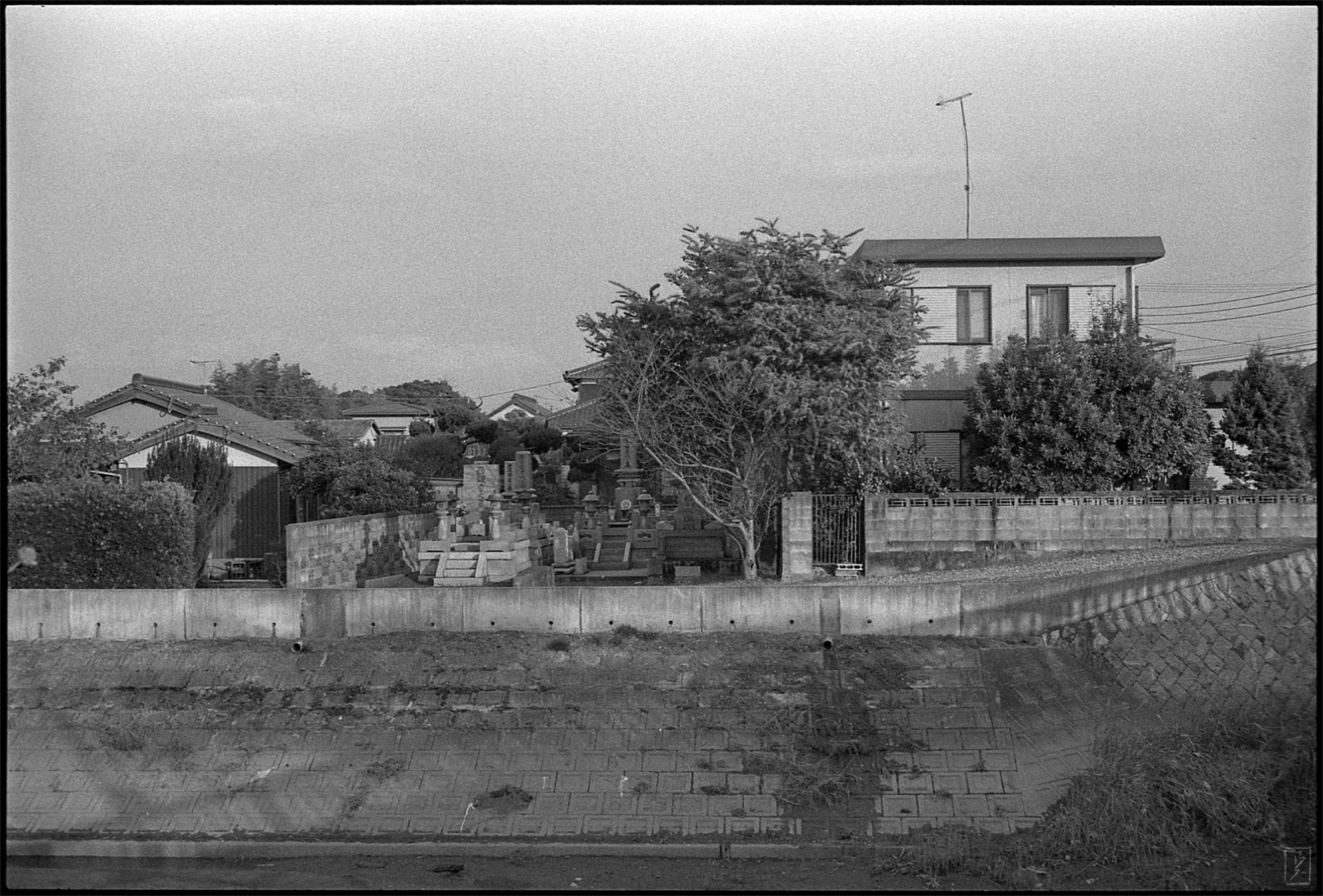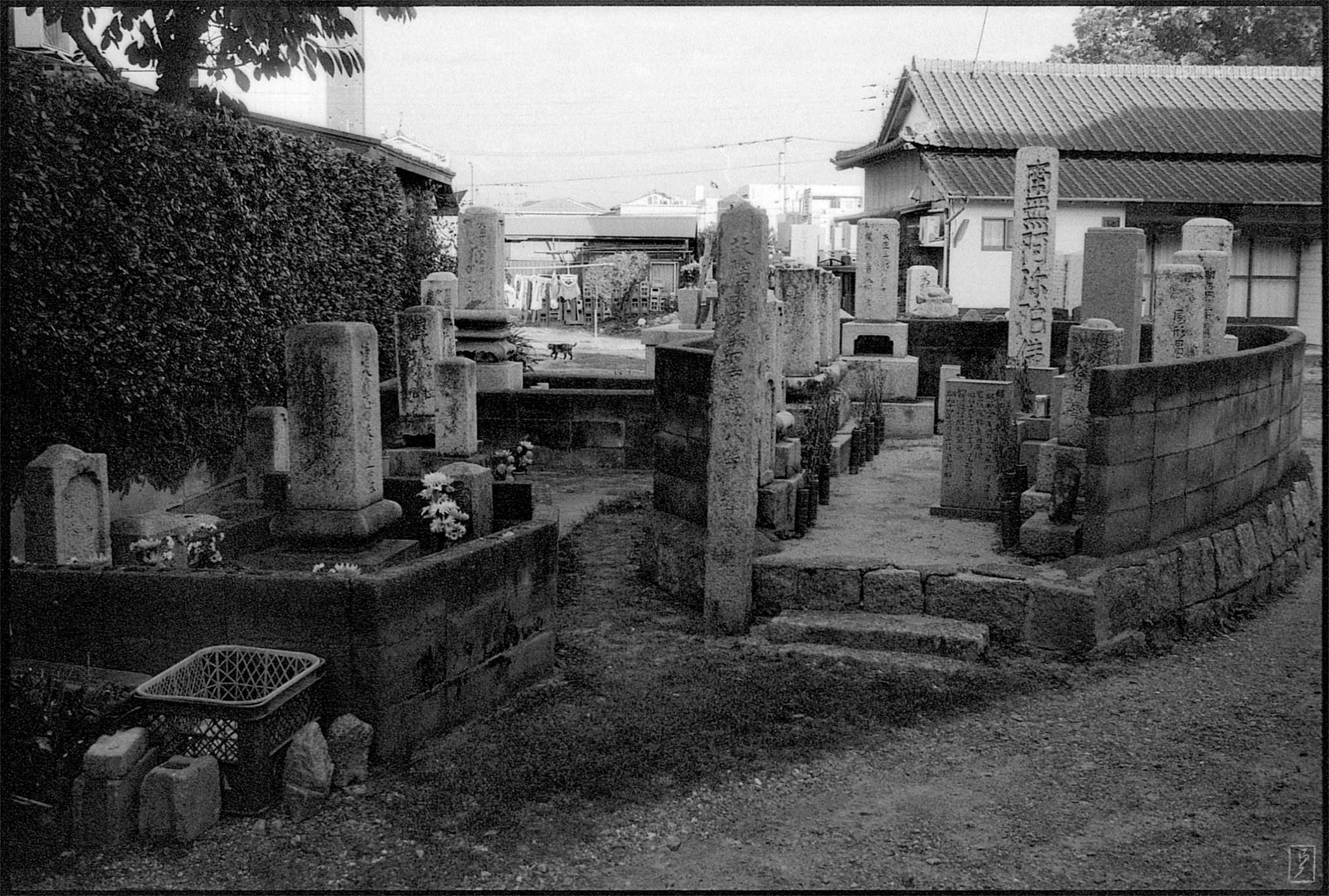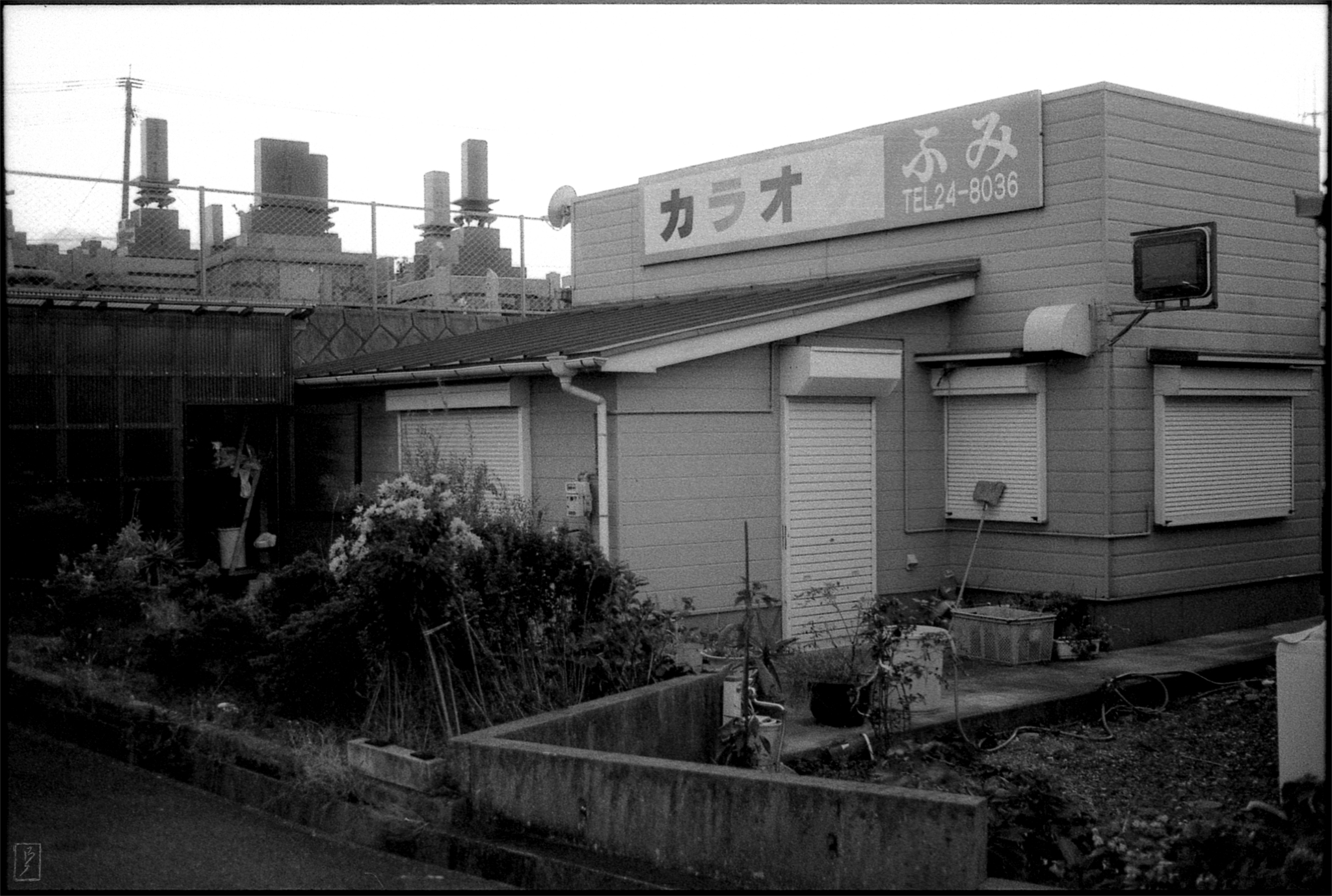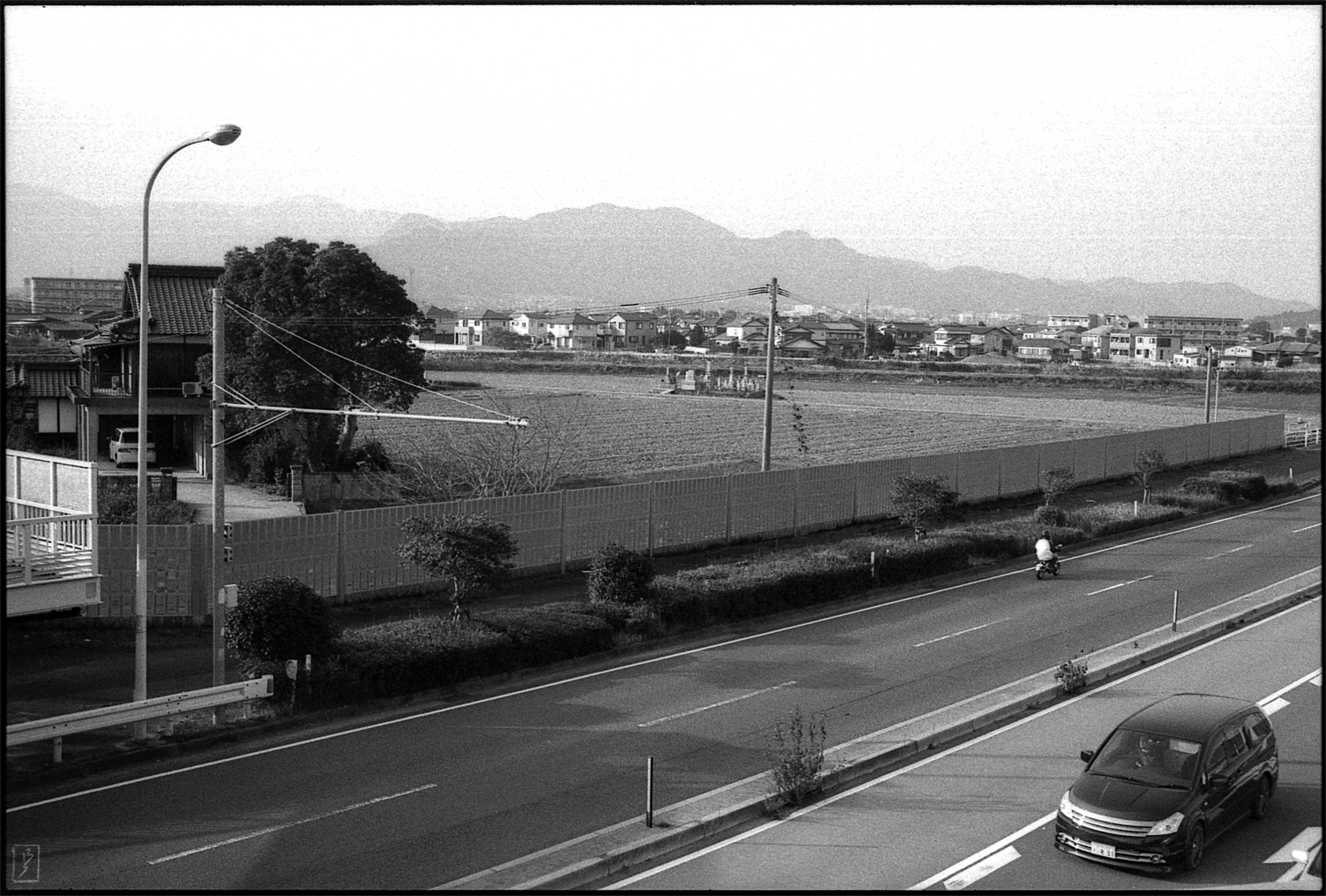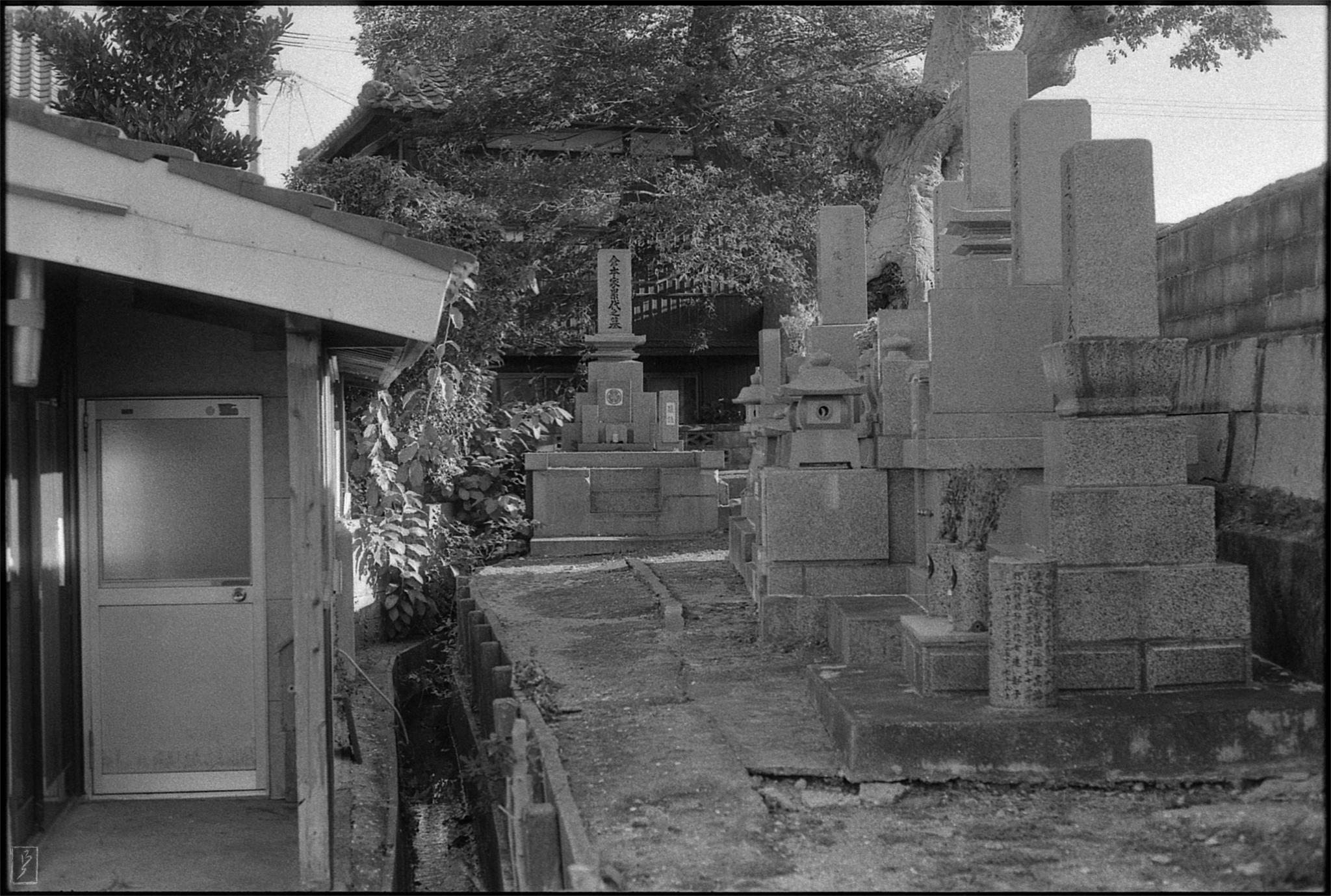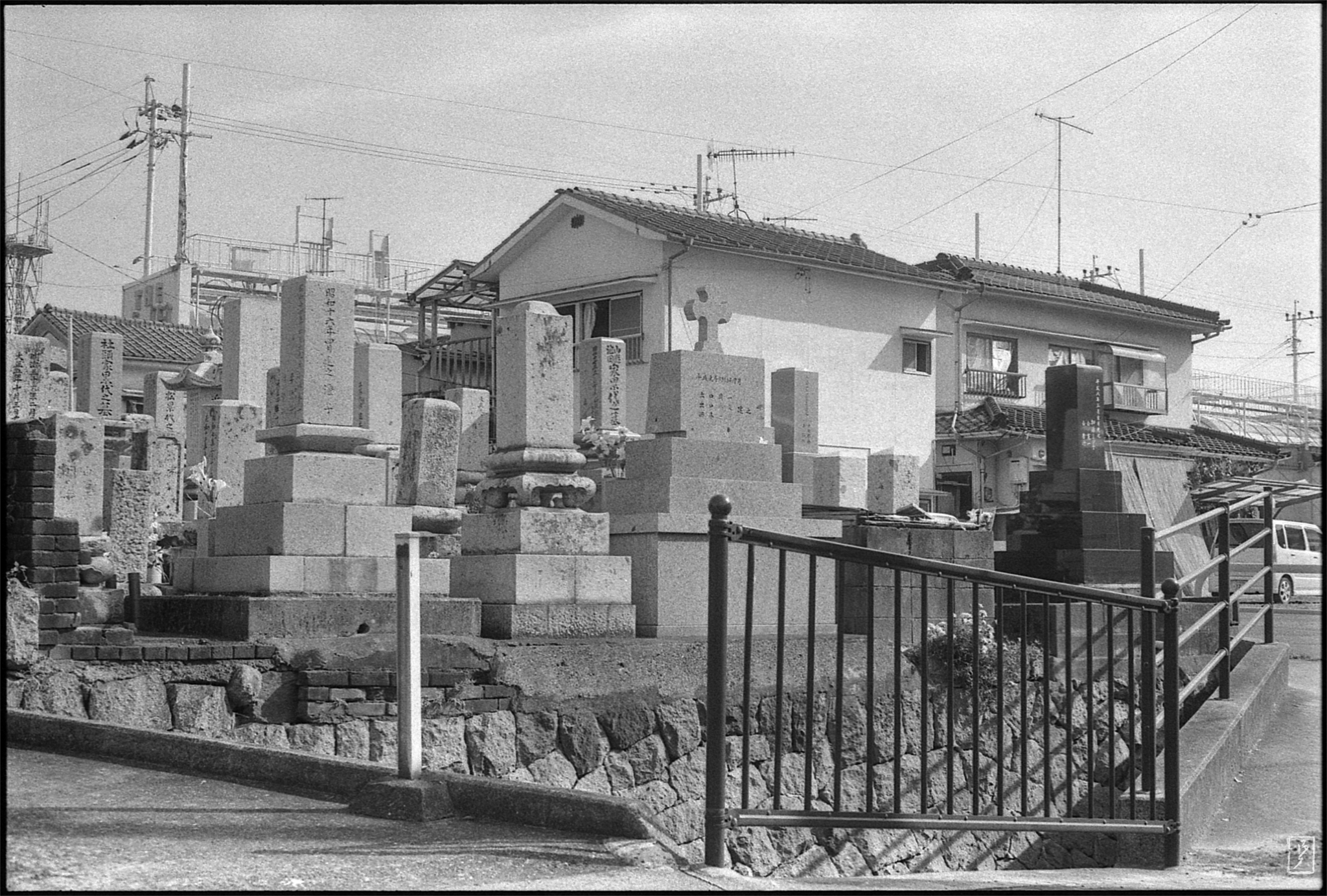
Tag: Yukuhashi
Im Fluss
Kiss me
Gravity

Photo taken without involvement of a photographer: When I bowed down to adjust my shoestrings, the camera belt slipped from my shoulder, sending the camera on a swift descend towards the parking-lot tarmac. On impact, the shutter of the camera fired, resulting in the image above. Luckily the camera shrugged it off, save for a few scratches in the bottom plate.
In print
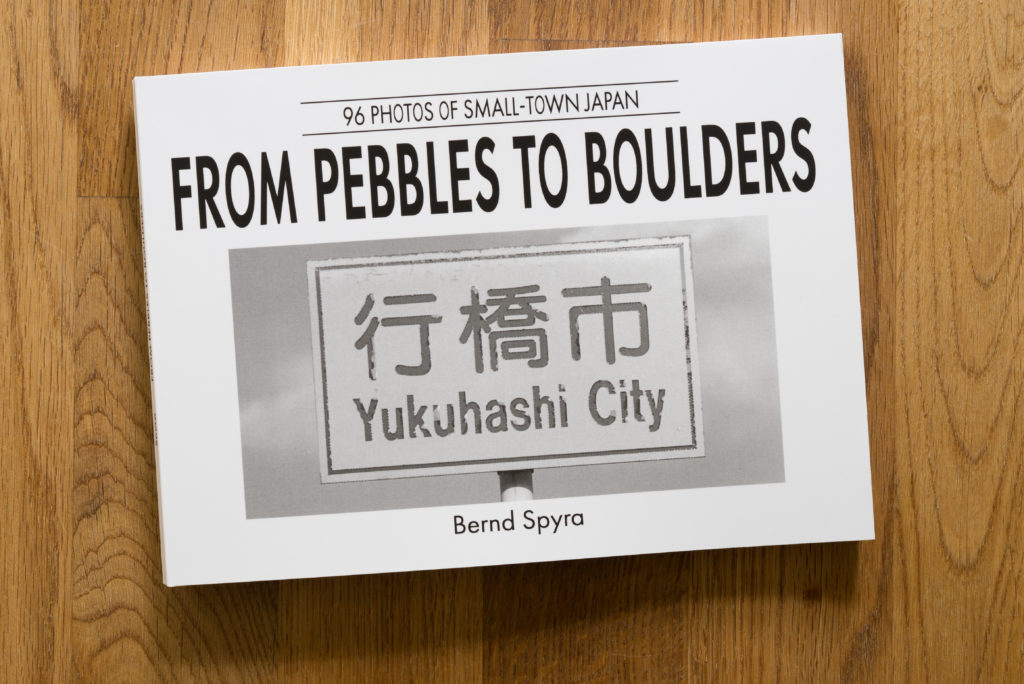
As already described here and here, the emerging COVID-19 pandemic left my wife and me stranded in her hometown Yukuhashi from March to July 2020 — right after the birth of our son. During that time, I carried a camera wherever I went, resulting in the capture of a large number of scenes of the local landscape, stones, rivers, houses, people, economy, politics, COVID-19, popular mythology and religion … my perspective on Japan “from pebbles to boulders,” so to speak.
Back in Hamburg, work was begun to edit the photos into bookshape. Being a side-project to my research, it took until September of this year to see the publication of the finished book. While 38 cartridges of film were carefully exposed and developed by hand in Yukuhashi, only 96 of the resulting photos were selected and arranged for this book, the layout being handled by Shoko Tanaka.
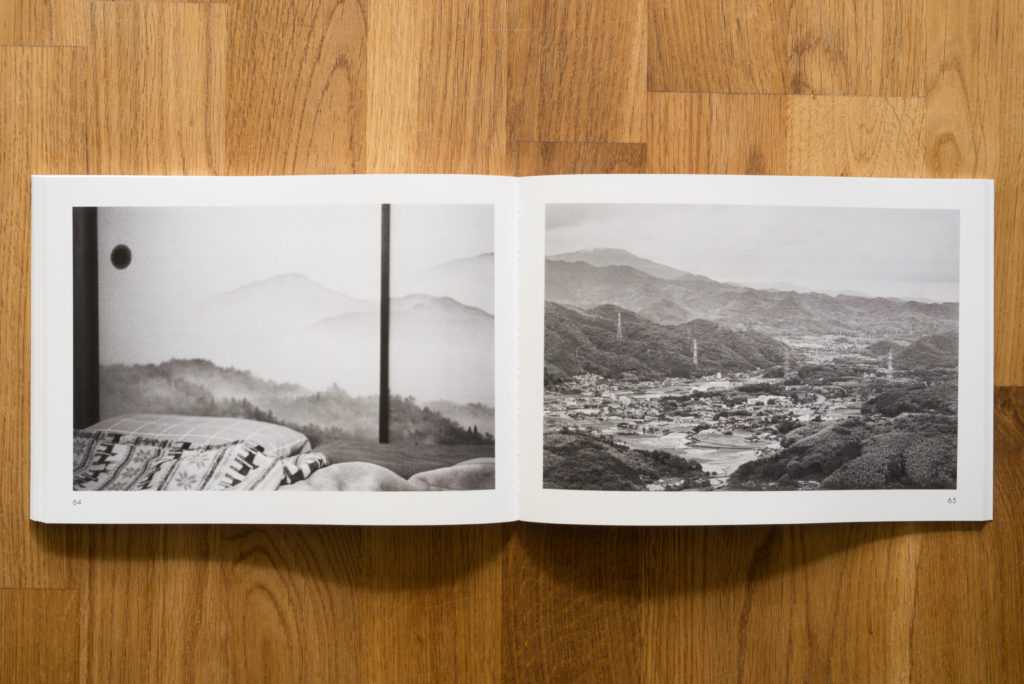
The book is printed to order by Norderstedt’s finest “Books on Demand” printer-publisher. It can be ordered (in Europe) through any purveyor of books of your choice, i.e. your local brick and mortar bookstore (suggested!), Book on Demand’s own webstore or various online bookshops.
From Pebbles to Boulders : 96 Photos of Small-Town Japan
ISBN 978-3-75349986-4
19,49 €
Farewell Yukuhashi, hello Hamburg

On June 30 we finally left Yukuhashi for Hamburg, arriving back in our usual dwelling on July 1. Little bleary, worse for wear and tear, but happy to be back. We had left Europe as two and came back as three to a place that had changed as well, arriving one and a half months later than we had originally planned.
Coincidentally, our flight with JAL was the first one by that airline between Japan and Europe since the Covid-19 outbreak. Things seem to slowly creep back to some measure of normal, and we too are trying to fit back into our usual lifes. But like the river you cannot step in twice, things are not quite the same anymore, making us accept new roles to fill from now on.
One role that I nevertheless intend to continue to play on this stage will of course be the humble photographer. In Yukuhashi, I exposed and developed 38 cartridges of Fujifilm Neopan Across 100 II, with the last two rolls of film developed on the morning of our flight back to Hamburg. Whenever I will find the time for it in the next few weeks I will work on editing a small spread of pictures showing what we saw in Yukuashi between March and June. Other projects — more on those later — are forthcoming as well.
Lost in Lactation
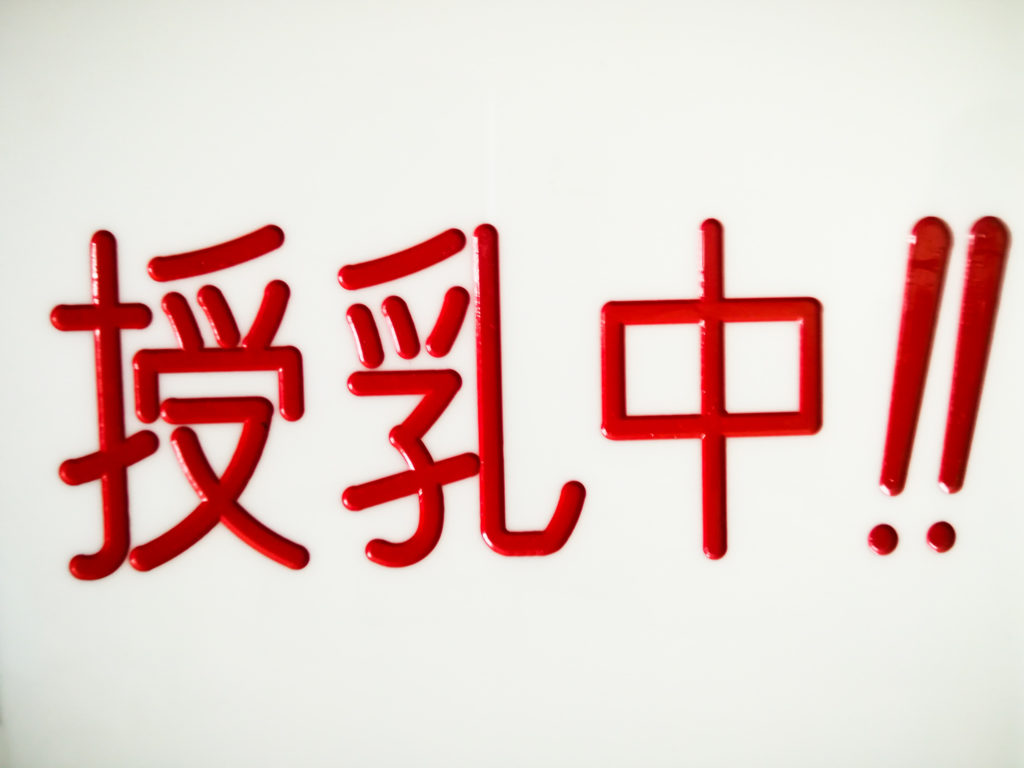
Long time no see:
On February 28, I arrived in Yukuhashi, the hometown of my wife, where she wanted to give birth to our first child. As intended, this happened not long after my arrival and since then both her and the baby are doing fine.
We planned to return to Hamburg in the middle of May, but now it looks like our return has been postponed indefinitely, due to the recent worldwide unpleasantness related to the Coronavirus. This leaves us stranded in Yukuhashi, a small (dare I say rural?) town on the southwestern shore of the Japanese Inland Sea, in the vicinity of the metropolitan area of Kitakyushu. Even though the baby naturally takes up most of our energy (which we gladly give to him), still plenty of opportunities to record the peculiarities of local life with my camera present themselves almost on a daily basis.
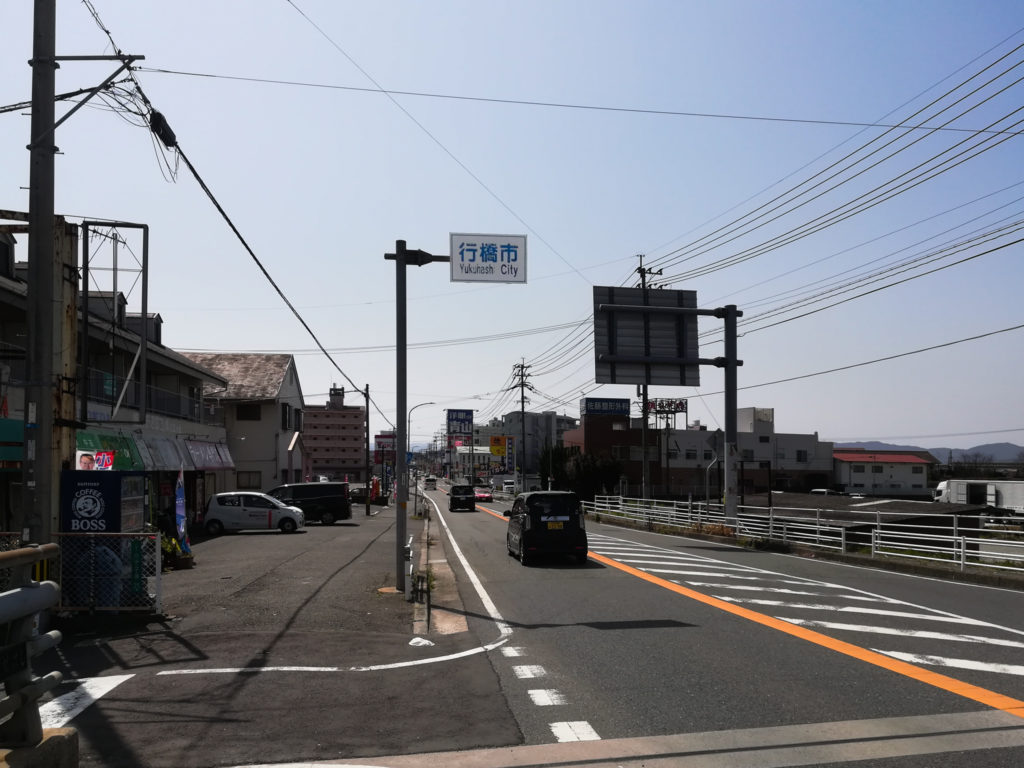
Since as usual my tool of choice is a 35mm film camera, it will take some time for anyone to see the photos taken here. They are forthcoming though.
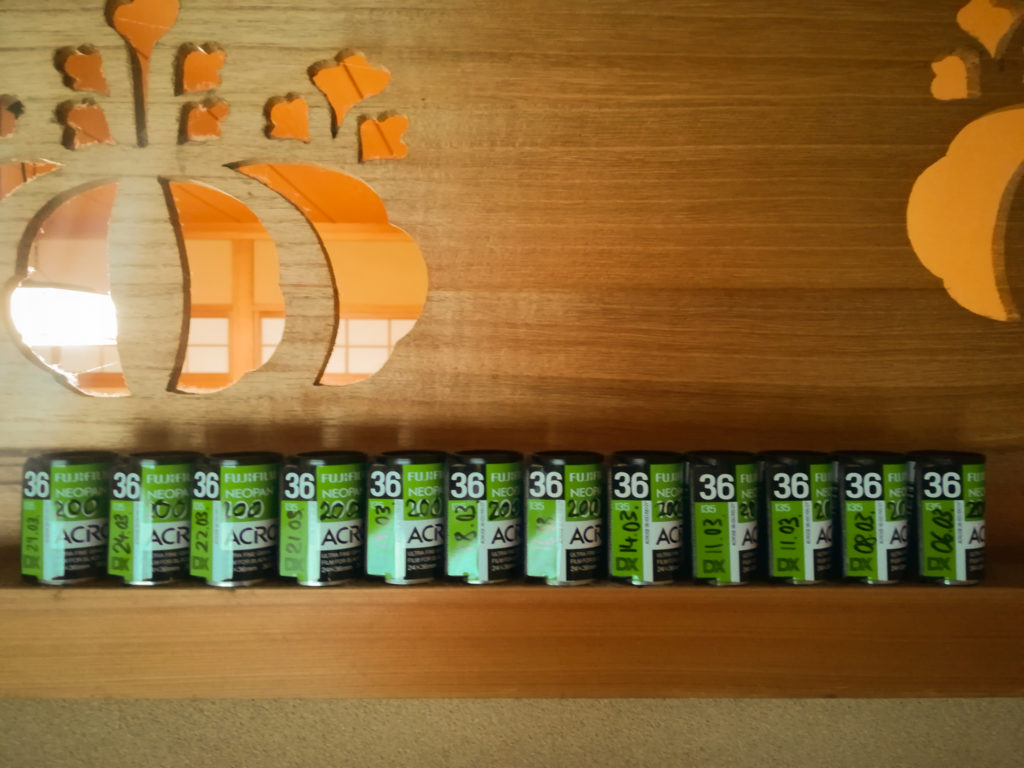
Meanwhile in Hamburg: Various issues of my photo magazine “reflex” are now available through the online store of the Nachladen, as are many other publications by local artists from Hamburg. Please check it out.
Yukuhashi, February 2017
Vending machines of Yukuhashi
Another part of the local scenery that you just can’t avoid noticing are the automatic vending machines which are set up everywhere, no matter if it’s the center of the city or residential neighbourhoods. Solitary or in groups they wait for a thirsty passerby to offer softdrinks to or maybe even a can of Sake. They remind me of the little Shinto shrines and Buddhist statues also commonly seen at the side of the road, but of course these vending machines serve a more mundane purpose, being dedicated to the gods of Consumer culture.
Cemetries of Yukuhashi
It might seem like a strange subject matter to start with, but in fact one of the first and ultimately most striking things to catch my eye in Yukuhashi were the graves and little cemeteries, for they are seemingly everywhere. Being situated between the fields, in the middle of the city, in backyards, next to parking spaces or even close to shopping malls, sometimes it isn’t clear what was there first, the graves or their surroundings. Anyway, there appears to be none of the distance we keep from our deceased, who we usually put out of sight in cemeteries, away from our homes and workplaces.



